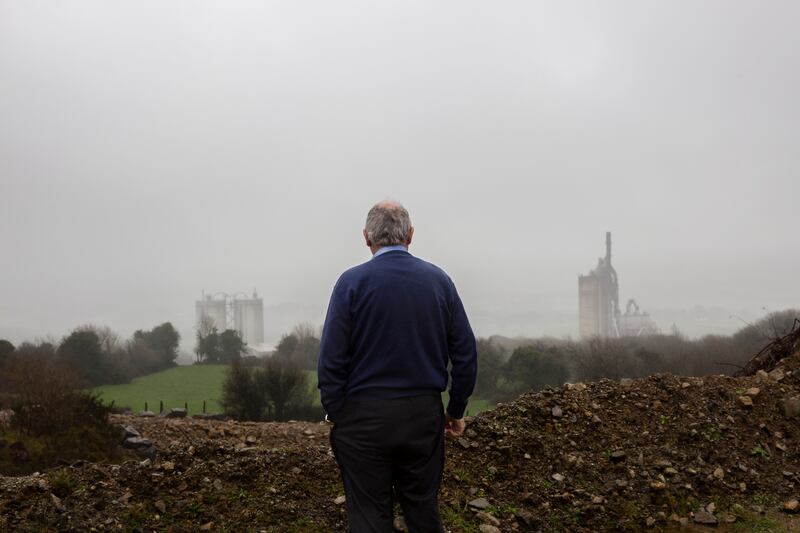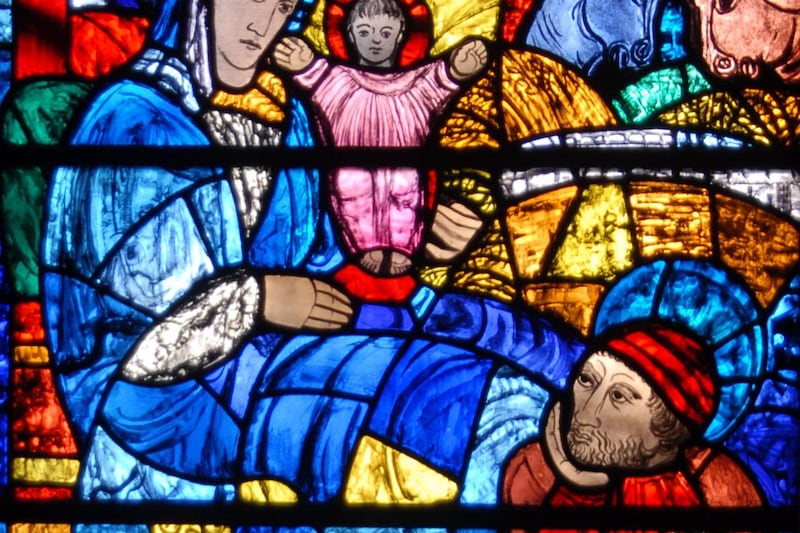Cyril McGuinness was a career criminal with a past in paramilitarism. Born in Dublin in 1964, he’d made the Border his home, living first in Rosslea until he became involved in a land dispute and was “chased” out of the village. Next he ended up in a house in Teemore not far from the Quinn Group headquarters. He was well known to the RUC from when they were fighting IRA terrorism. One former officer spoke of the threat he posed in the 1980s: “You worried every time you seen him. If he was in the area, you could be sure an attack was imminent. He was a real threat.” He’d been identified as the driver of the lorry carrying a massive bomb that ripped through London’s Docklands in 1996. He came to be known locally as “Dublin Jimmy”.
After the IRA ended its campaign, he’d aligned with dissident republicans, while continuing to smuggle cars and heavy machinery. He was convicted of various criminal offences, including the illegal transportation of waste, but avoided prison. He did do jail time in Belgium after being found guilty of a multimillion-pound smuggling operation in which he’d stolen twenty trucks and cranes and shipped them back to Ireland where he used some of them to steal ATMs from banks across the island.
[ How the mighty Seán Quinn was toppled by his own flawsOpens in new window ]
By 2013 he was back on the Border, living with his partner. [Seán] Quinn admits that he met Dublin Jimmy in the pub a couple of times, but that he didn’t know him. Police suspect it was at some point during 2013 that the criminal offered his skills and expertise to the Quinn supporters. Six months after he’d returned to the Border, McGuinness was reported as the chief suspect in the theft of the oil tanker from a fuel depot that was driven into the Aventas headquarters, causing significant damage to the front doors and foyer. The owner of the depot, Tommy Cassidy, told [journalist Maeve] Sheehan that he’d been tipped-off that McGuinness had been “eyeing up” his tanker. “I didn’t believe that they would start stealing from the local community to do damage,” said Cassidy. “I said to the police straight off: ‘I know who did this job.’ I know exactly who did it, and I gave them McGuinness’s name – I had no hesitation in saying it was McGuinness,” Cassidy told the Sunday Independent. Despite this accusation, Cyril McGuinness was never arrested nor charged with any offence linked to the tanker theft.
Quinn’s more hardline supporters were certainly aware of Dublin Jimmy and what he was capable of. At the start of a new year, they likely felt that the co-ordinated, targeted and sustained attacks of 2013 were going to have a demonstrable impact on the business and its future. In the first weeks of 2014 the attacks continued, with two telecoms cabinets demolished and set ablaze. Soon after, a petrol-bomb attack cut off all broadband and phone services to dozens of homes along the Border.
READ MORE
Events were undoubtedly escalating.
In February 2014, Impartial Reporter journalist Rodney Edwards was leaked an internal email from a senior manager at Aventas. Quinn Rooftiles, established in 1983, was to be sold to Kevin Lagan’s Belfast-based company. In his story, the journalist quoted from the email: “The sale enables us to achieve our two objectives of a satisfactory price and continuity of employment for our Rooftiles employees,” it said. Despite getting a bullet in the post, Kevin Lagan had come back, not for the cement plant, but for the roof-tiles business, which would be a much smaller deal for both sides.
[ From Cavan to Kiev, the story of Seán Quinn that won’t be forgottenOpens in new window ]
The response was violent and costly. Over the course of two evenings in February, co-ordinated attacks were mounted on Lagan businesses in Comber and Lisburn in the North and 250 miles (402km) away in Cork. In Comber, two large dumper trucks and other machinery were set on fire and destroyed. Heavy plant machinery was also the target at Lagan Asphalt premises in Carrigtwohill in Co Cork. In Lisburn, the attackers daubed graffiti, making clear the motivation for the attacks: “Stay out of Co Fermangh [sic]” and “hands off Quinn”.

The cost of the damage was estimated to be €1 million. For a time, Lagan’s company was warned that it could not be insured against further violence. Regardless, for several weeks, it appeared that Lagan would continue with his purchase of the roof-tile business. That was until the morning of his wife’s death. Kathleen Philomena Lagan died on March 27th, 2014. She was 65 years old and had suffered from cancer. The couple had five children, two of whom joined the family business. On the day of her death, Kevin Lagan received a letter. When he opened it, he realised it was another threat. This time, he was warned that if he went ahead with the roof-tile deal, he “would not live to see the benefits”.
After burying his wife, Lagan pulled out, saying his company had sustained criminal attacks that were executed with the sole purpose of “creating a toxic atmosphere and intimidation in order to illegally dissuade potential investment and investors into the area”.
“We have repeatedly said that it was only a matter of time before such attacks switched their focus from property and plant to people,” a Lagan company spokesman told the Belfast Telegraph.
The attacks on Kevin Lagan and his business were particularly vicious. In the aftermath, Lagan met PSNI Chief Constable George Hamilton to voice his frustrations that police were failing to bring those responsible before the court. Lagan was told that a south Armagh fuel smuggler had likely co-ordinated the attacks on his business. Another businessman from Fermanagh was also a suspect. Police may have been briefing that they knew who was responsible, but despite the threats to kill and the millions of euros of damage caused, they failed to bring anyone to court. The lack of charges only served to encourage those involved. They, like the IRA before them on the Border, were able to strike at will and with impunity.
Cyril McGuinness was living openly on the Border, and while linked to a series of attacks, he was never charged with a single offence. For some, this only raised suspicions that he was a protected species. That he was of some value to police. That he was an informer.

[ Book review: Quinn: Grit and Greed on the BorderOpens in new window ]
In an interview with the author in October 2021, Quinn refused to outright condemn the threats and attacks on Kevin Lagan’s business, still blaming the decision to send in over a hundred security guards to help seize his companies 10 years previous for setting the tone.
“There was lots of things done, lots of things said which shouldn’t have been done or shouldn’t have been said. But at the end of the day, I suppose if you see the 100 people coming from Dublin down into your local, rural area, [which during] the early part of the last century didn’t have anything, there was nothing there, and all of a sudden they come in to where there was 7,000 or 8,000 jobs employed, and they come in with heavy security and taking over a business, which was one of the most successful in the country, it did lead to a lot of anger. It did lead to a lot of people disappointed. And I was one of those people.
[ Quinn Country part 2: It’s like Shakespeare meets Father Ted meets The Big ShortOpens in new window ]
“I was very, very angry. And I made no secret of that. The heavy-handed approach, by an Irish government selected by the people, to go in with a heavy hand into a rural area, who had done nothing but good in that area, to take it over and destroy it, I mean, it was criminal. And of course it was going to raise tensions, and of course things were going to happen and did happen. Was I part of it? Absolutely not. Was I angry, was it done because of my anger? Was it done because I was telling the truth about what the position was? Maybe. But was I involved in planning it or involved? Absolutely not.
Quinn by Trevor Birney is published by Merrion Press (€19.99)

















